Camellia seed oil is the oil derived from the processing of Camellia seed. Camellia oleifera is a plant of the genus Camellia in the Camellia family, which is mainly distributed in Guangxi, Hunan, Zhejiang and other provinces of China. It is also grown in India, Vietnam, Indonesia, Malaysia and other places. Camellia oleifera is the seed of the camellia oleifera tree. The mature oleifera fruit is oval in shape and has long hairs on the surface. It is composed of camellia puffer and camellia seeds. Camellia seed is composed of seed coat and seed kernel. The hull of tea seed accounts for 30%~34% of the weight of the tea fruit. The whole seed of the camellia seed contains 30%~40% oil, the kernel contains 40%~60% oil and 8% saponin. ~16%. Camellia oleifera has strong adaptability, tolerance to drought and barrenness, does not compete for land with food, and has advantages that other herbs do not have. Not only that, Camellia seed oil has high nutritional value and has health benefits. Camellia seed oil has a clear taste and fragrance. The fatty acid composition is similar to that of olive oil. The total amount of oleic acid and linoleic acid is as high as 90%. It definitely has huge market potential.
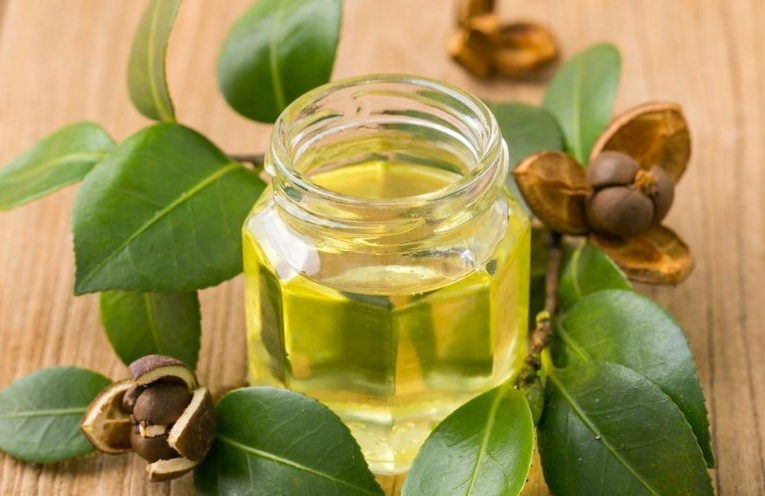
The pressing process of tea seed oil is as follows:
1. Harvest
The harvesting of camellia seeds is very seasonal. Generally, it only takes about 10 days from full maturity to cracking of the camellia fruit. This time must be harvested. The harvesting of camellia seeds should start 3 days before the maturity of the camellia fruit. The harvest is completed within 7 days after maturity, which is the principle of "three before frost and seven after frost". If the tea seeds are harvested too early, they are not fully mature, and the water content is high, and the oil content is low, which will affect the oil yield. If the harvest is too late, the tea seeds and fruits will crack and the fruits will be scattered. The frost-fall populations in the common Camellia oleifera generally mature around October 20, and the Hanlu populations mature in early October.
The picking of Camellia oleifera is generally carried out between physiological maturity and seed maturity, that is, before the seed has matured and the fruit has not cracked. Physiological maturity is from early September to early October. The seed shell is hard, black and shiny or dark brown, the seed kernel is milky yellow, and the embryo has matured, but the oil content of the seed kernel is only 30%-35%. At this time, the oil tea fruit Basically mature; seeds mature after the first ten days of October, the oil content of the kernels reaches the highest peak, namely 40%-60%, the fruits fall naturally, and the seeds are fully mature.
The fruit picked directly from the Camellia oleifera tree is Camellia oleifera. Camellia oleifera fruit is composed of Camellia oleifera (commonly known as tea bag) and Camellia oleifera seeds. Camellia seeds are composed of tea seed husks and tea seed kernels. Camellia seeds account for 38-40% of oil camellia fruits, and tea seed kernels account for 66-72% of oil tea seeds. The whole oil tea seed contains 25%-40% oil. The oil is mainly concentrated in the tea seed kernel, and the oil content in the shell is about 0.5%. Camellia oleifera seeds are commonly referred to as the hard-shelled kernels after removing the husk of Camellia sinensis.
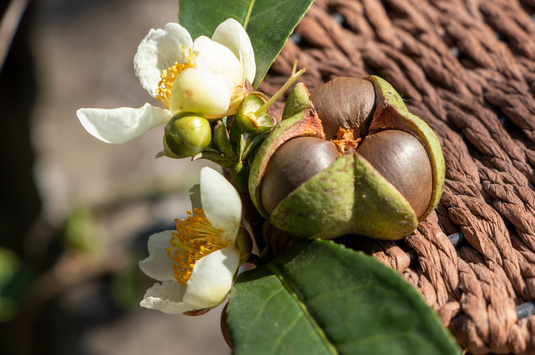
2. Storage
After the camellia fruit is recovered, it needs to be stacked for 5-6 days to promote the ripening of the camellia fruit and the cracking of the shell, which can increase the oil content of the camellia fruit. Then spread the camellia fruit on the soil drying floor, turning it frequently, and threshing it under the wind to remove the sundries. After drying the oil-tea seeds until the kernels and husks are separated, the oil-tea seeds are sun-dried and shaken with your hands to make a crisp sound, indicating that the oil-tea seeds are basically dried and can be stored in the room for oil extraction.
Storage characteristics of oil:
(1) It is easy to generate heat and mold, fat is easy to oxidize and heat, and protein is easy to absorb moisture and mold and deteriorate;
(2) It is not resistant to high temperatures and is prone to "oil running" in the oil;
(3) The safe moisture is low, the safe moisture of the oil (critical moisture) = the non-fat part of the oil × 15%, and the safe moisture of the camellia seed is 8%;
(4) The tissue is soft and easily damaged, the fat density is small, and it occupies a large volume;
(5) Strong hygroscopicity and easy to soften;
(6) The porosity is small, and the heat and humidity in the pile is not easy to dissipate.
The storage method of camellia seeds:
(1) Dry precipitation. Camellia seeds with a moisture content of 8% and below can be stored for 60-90 days, and seeds with a moisture content of 10% can be stored for 40 days, and those with a moisture content of 12% or more must be stored after drying;
(2) Low-temperature storage, and the temperature in the stack should be controlled below 25°C;
(3) Reasonably stacked, the bulk is not more than 1m high, the bag is not more than 6 bags, and the stack is ventilated;
(4) Ventilate in time, and turn the surface of the stack frequently to dissipate heat and humidity;
(5) Strengthen inspections.
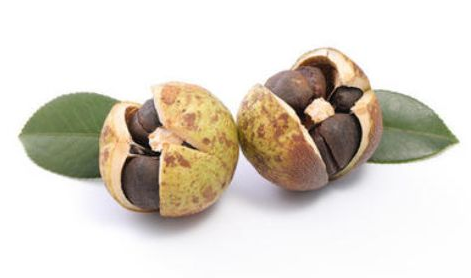
3. Drying
If the moisture content of the harvested commercial camellia seeds is too high, the seed shell is weak and not easy to be broken, and the plasticity is large, and it is easy to squeeze the material. Therefore, the oil tea seeds with too high water content should be dried to make the water content not exceed 5%, so as to hull and roll the embryo. Tea seed drying is very important in oil extraction processing. The quality of tea seed drying has a direct impact on the oil yield.
The drying process of camellia seeds is divided into three stages:
(1) In the preheating stage, the heat supplied by the hot air to the camellia seed is used to increase the temperature of the camellia seed, and a small part of the heat is used for the vaporization of the free moisture of the camellia seed. As the temperature of the camellia seed increases, the partial pressure of steam on the surface also increases. With continuous improvement, the rate of water vaporization also increases rapidly;
(2) During the constant-speed drying stage, the water vapor pressure on the surface of the camellia seed is in a saturated state corresponding to the temperature of the camellia seed at this time, and the drying speed remains unchanged, which is equal to the speed at which the surface moisture of the camellia seed diffuses to the surrounding medium, and the moisture content decreases linearly;
(3) The deceleration drying stage is the process in which the moisture inside the camellia seeds transfers to the surface and is evaporated (that is, the heat conduction process). Until the moisture contained in the camellia seeds is balanced with the humidity of the hot air, the material temperature also rises to the temperature of the medium same.
The drying of camellia seeds generally adopts low-temperature baking drying method, because the tea seed kernels are covered with a layer of relatively densely organized tea seed shells in a separated state, which hinders the heat transfer and water evaporation process of the tea seed kernels, and the moisture of the camellia seeds Most are concentrated in tea seed kernels. Commonly used facilities and equipment are bakery, flat-plate dryer, and horizontal rotary dryer. The shells and kernels of the roasted camellia seeds are in a separated state, and have the characteristics of crisp shells and soft kernels. Generally, the oil-tea camellia seeds are roasted to a moisture content of 5%-8%, and then the bed can be lowered.
4. Cleaning up
The purpose of cleaning is to increase the oil yield; improve the quality of tea oil and the utilization value of the cake; improve the processing capacity of the equipment; reduce the degree of equipment wear; and increase the processing capacity of the equipment. The cleaning methods are: screening, winnowing, magnetic separation, removing side-by-side mud, dry specific gravity separation and other methods.
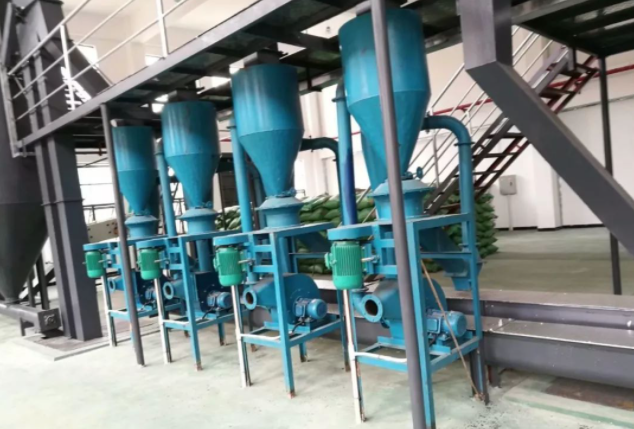
The process requirements for oil cleaning are: the maximum impurity content of pure camellia seeds is less than 0.2%, using 26-28 holes/25.4 mm sieve for inspection (aperture is about 0.7mm); the amount of camellia seeds in the scraps is less than 0.5. After drying, the oil tea seeds should be cleaned of the empty shells, soil and other debris.
5. Shelling
The requirements for peeling and kernel shell separation are: high shell breaking rate, no seed leakage, and low powder content; the shell content in the kernel is between 5%-10%, and the inspection is carried out with a 10 mesh/inch inspection sieve (aperture is 2mm) ; The kernel content rate in the shell does not exceed 0.5% (check by hand picking method). If there are whole seeds, they are counted after peeling the shell.
Shelling methods include: impact method (impact sheller), rubbing method (disc sheller), shear method (knife cage sheller), etc. The main shelling machines include BKY-45 disc shelling machine, BKL-25 horizontal centrifugal shelling machine, etc. Generally, camellia seed shelling machine is used for shelling. It is required that the moisture of the oil tea seeds be controlled between 12%-18.5%, and the whole kernel rate after peeling the shell should be above 99%. When the moisture content of the oil-tea camellia seed material is 10%-22%, the oil-tea camellia kernel can maintain toughness and elasticity, and is not easy to break. The gap between the shell and the kernel is 1-3mm, which is convenient for breaking the shell.
When the shell and kernel are separated, the proportion of shell and kernel should be controlled. For the raw material of camellia seed from which oil is extracted at one time, it is required to contain 10%-15% of the residual shell content in the squeezed material. The reason is to increase mutual friction when rolling embryos or milling, to avoid paste, and play a loosening effect; when steaming, it plays a role of ventilation and heat transfer, so that the material is easy to be steamed and steamed; when the oil is pressed, there are pores. effect.
Camellia seed husk is thin and brittle, not easy to absorb oil. The shell thickness is about 1mm, and the shell layer of each seed weighs about 1 gram. The specific gravity of the shell kernel varies greatly and it is easy to separate. The kernels and husks of Camellia oleifera seeds after breaking the husks can be removed by winnowing or screening, and can also be removed by a special winnowing machine.
6. Flatten
The purpose of flattening is to make the oil have a certain particle size, and it is easier to enter the gap of the rolling roller in the embryo rolling machine; when the subsequent oil steaming process is carried out, the contact surface of the oil seed kernel when heated is increased to facilitate the moisture and material temperature. adjust.
The requirements for flattening are: Camellia kernels are cracked, and most of the materials will become irregular-sized particles after being transported by a bucket elevator or turned by the stirring leaves in a wok. In actual production, it is required to flatten the whole oil-tea camellia seeds into 6-8 petals. In order to ensure the crushing effect, the moisture content of the oil-tea camellia seeds should be controlled to be less than 8%. The crushed oil tea kernels are classified by a vibrating sieve, and the fine kernels are sieved out to facilitate the next batch frying.
7. Rolled billet
The purpose of the billet is:
(1) Try to destroy the cell wall of the oil-tea seed cell, so that the oil can be easily taken out from the oil-tea seed cell. When rolling the billet, the powerful squeezing and shearing effect produced by the rolling rod will squeeze the oil tea seed cells while rolling the sheet;
(2) Increase the surface area of the material embryo, which greatly shortens the path of grease extraction;
(3) The oil is changed from granular to flake, and the surface area is increased, so that the embryo is easy to absorb water and heat during the steaming and frying process, which is beneficial to the thermal destruction of cells and protein denaturation, as well as the preparation and collection of grease.
The requirements of the rolled billet are: the rolled sheet is thin and uniform, less powdery, not exposed to oil, the sheet is loose in the hand, and the loose hand diverges. It is necessary to strictly control the powder degree index after rolling, and use a sieve with a 1mm sieve opening during the measurement, and the content under the sieve should be 10%-15%. In order to control the powder degree, the water content of the rolled billet can be appropriately increased, and the thickness of the green sheet can be controlled.
The rolling mills mainly include spring tight-roll type counter-roll rolling mills, hydraulic tight-roll type counter-roll rolling mills, and three-roll rolling mills.
8. Steam and stir-fry
The process of turning the raw embryos from raw embryos into cooked embryos by adding water, heating, steaming embryos, and frying embryos to the raw embryos made from the rolling stock is called steaming and frying.
The main functions of steaming and frying are: to make the oil more fully produced; reduce the power consumption of oil extraction; adjust the structure of the raw material to adapt to the requirements of squeezing; facilitate the production of better quality oil.
The methods of steaming and frying are:
(1) Moist steaming and frying method, mainly used in large and medium-sized power screw presses for one-time squeezing of oil;
(2) Heating steaming and frying method;
(3) Direct fire-fried seed method (roasting), the main equipment is a flat-bottomed wok and a cylindrical steaming wok.
The moist steaming and frying method is divided into two stages, namely steamed embryos and fried embryos. In the first stage, the function of adding water and moisturizing and steaming embryos is mainly to make the protein swell with water, destroy the cells, condense oil and soften the embryos. The high-moisture steaming and frying process is commonly used, that is, the moist moisture reaches 16%-20%. This method can increase the oil yield. The second stage of heating the frying embryo, the main purpose is to raise the temperature to remove the water, so that the embryo reaches the appropriate low moisture and high enough temperature before the squeezing, so as to meet the suitable squeezing structure performance. Modern production generally divides the operation into two equipments. The wet steaming embryo at the front end is carried out in a vertical steaming and frying pan, and the frying embryo at the back end is mainly carried out in an adjustable steaming and frying pan attached to the oil press.
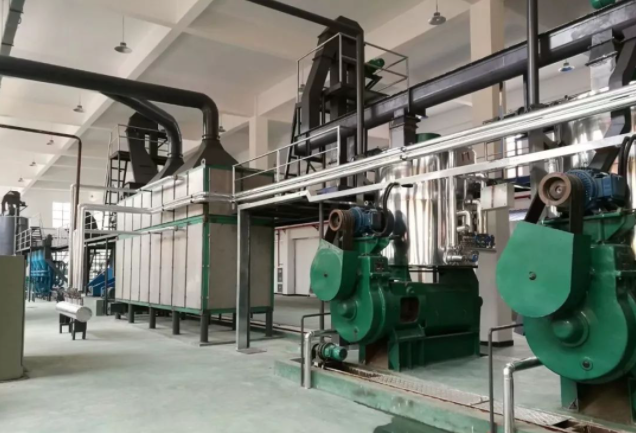
Camellia seeds generally use the direct fire-fried seed method (commonly known as roasting). Two flat-bottomed frying pans can be used together, each with 35-50 kg of ingredients, and a total of 40 minutes of frying. When frying the ingredients, the stove should be filled with a flat fire and the firepower should be even. When the frying reaches the end, green smoke will be emitted. The surface of the frying material will be yellowish, and the inside and outside are evenly cooked and cooked. The temperature is as high as 130℃-135℃ when it is out of the pot. The powdered oil tea kernel can be added in the pot before the ingredients are fried to prevent it from being burnt.
9. Squeezing oil
Necessary conditions for squeezing oil:
(1) The hydraulic pressure of the grease in the channel inside the squeeze is as large as possible;
(2) During the pressing process, the larger the diameter of the oil flow capillary and the more the number, the better (that is, the greater the porosity, the better);
(3) The shorter the length of the oil flow capillary, the better;
(4) The pressing time should be as long as possible within a certain limit (not too long to prevent hardening of the saponin);
(5) The lower the viscosity of the oil under pressure, the better.
Camellia seeds have low protein content (9%), and the oil path is unobstructed. The oil can be squeezed out under low pressure. The residual oil in the pressed tea cakes is low, but the oil tea seeds are rich in starch (25%) , Saponin (8%-16%) and other sticky substances, when the screw press is used for pressing, it is easy to have problems such as the front oil section, no food, and the press chamber lock. In the production of oil tea seed oil, ZX-10 (formerly 95) and ZX-18 (formerly 200A-3) screw presses or horizontal hydraulic presses are mainly used.
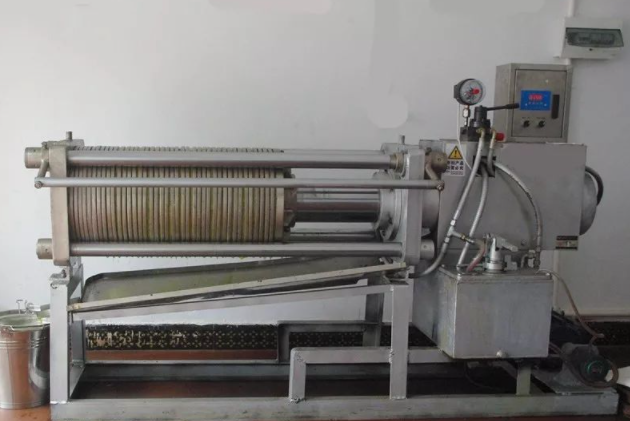
The technical parameters of the ZX-10 oil press are: When pressing, the clinker input temperature is about 120℃, the input water content is below 2%, the press speed is 28 rpm, and the output cake thickness is 1.5-1.8. mm. If the clinker squeezed moisture is too low and the material temperature is too high (that is, the material is old when it is fried), it will appear as "smoke" at the cake outlet, and the press will eat less material and produce less oil. If the water content of the clinker is too high (that is, the material is fried and tender), some of the strips (that is, the straight pressed strips) will not produce strong oil, and there will be oil flowing out of the discharge port, and the press will be difficult to feed because of the lack of food.
The technical parameters of the ZX-18 oil press are: the cake thickness is 5-8mm, the working current is 25-28A, and the speed of the press is 8 rpm. A large amount of oil is discharged from the second and third gears of the cage plate, a large amount of slag is discharged from the fourth and fifth gears, and a small amount of slag is discharged from the sixth and seventh gears.
10. Crude oil removal
Pretreatment of the crude oil of camellia seed is to separate the insoluble mechanical impurities in the crude oil as much as possible. There are three methods of sedimentation, filtration and centrifugal separation. The equipment includes scraper oil tank, plate and frame filter press, leaf filter, tubular filter press and so on. An operating cycle of the plate and frame filter press is composed of four stages: assembly, filtration, unloading and cleaning of the filter cloth. In operation, when the pressure of the filtered oil phase reaches 0.35 MPa, the filtration is stopped. Then pass in compressed air to blow out the residual grease in the filter residue as much as possible, then loosen the filter plate compressor, remove the filter residue on the filter plate, wash the filter cloth, and finally reassemble it to continue production. The best temperature for filtering tea oil is 35~40℃, and the filtered sludge can be mixed into the oil for re-squeezing to recover the oil. If the quality of the oil-tea seed oil is good, it is generally only necessary to perform a simple filtration treatment to remove the cake crumbs. Two parallel-connected filter-type pipeline filters can be used for filtration.
11. Degreasing
Winterization degreasing is to keep the grease in a certain low temperature condition for a certain period of time, and then filter it to remove the solid fat components that are not resistant to low temperature.
The crystallization of solid fat is divided into three stages:
(1) Cooling and supersaturation of molten grease;
(2) Generation and formation of crystal nuclei;
(3) The growth of fat crystals. Try to maximize the formation of β-lipid crystals that are easiest to filter and separate.
The main influencing factors of winterization degreasing are:
(1) The crystallization temperature and cooling rate of the grease;
(2) Crystallization time;
(3) Stirring speed;
(4) Intermediate transportation and separation methods;
(5) Oil quality.
Extracted oil and ester crystals are separated at the same time as winterization. Camellia seed oil contains high melting point triglycerides composed of saturated fatty acids such as palmitic acid and stearic acid. Suspended substances are deposited under low temperature conditions for long-term storage to make oils. The reduced transparency directly affects the appearance of refined tea oil and lowers the grade of tea oil.
The stainless steel high-position storage tank naturally crystallizes, and it can also achieve better results after filtering. However, due to large fluctuations in the final temperature, the actual shelf temperature may be lower than 0°C in the market (the national requirement for salad oil is 0°C, and it must be clear and transparent for 5.5h), and there will still be sediments. Therefore, it is necessary to use a refrigerated crystallization tank with refrigeration equipment.
The tea oil winterization process does not allow the temperature to be too low, and the oil temperature is better to be controlled at about 3°. The deodorized tea oil is sent to a freezing crystallization tank with gas pressure for freezing treatment. When the oil temperature drops below 3°C, stop the circulation of the refrigerant in the jacket, make the oil temperature continue to drop to about 0°C and keep it for 5.5 hours, and then filter. The freezing system of the winterization equipment adopts automatic control to prevent the phenomenon of pot formation due to low temperature in conventional freezing.
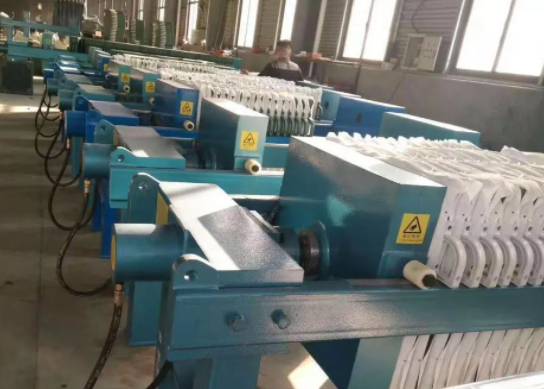
12. Fine filtration
In the production of camellia seed oil, an all-stainless steel filter is generally used for double-layer filtration, that is, a filter cloth (made of absorbent cotton) is added to the filter paper or the filter membrane of the oil filter. The filter medium is filter paper. The product gets a higher grade. Generally, the upper oil should be filtered first and then the lower oil should be filtered. At the same time of crystallization, some crystals will be attached to the wall of the container to reduce the heat transfer efficiency, make the material cool unevenly, and affect the normal crystallization process, so it must be stirred at a speed from fast to slow.
Copyright © Henan Zhongxing Grain And Oil Machinery Co.,Ltd. All Rights Reserved. Powered by MetInfo